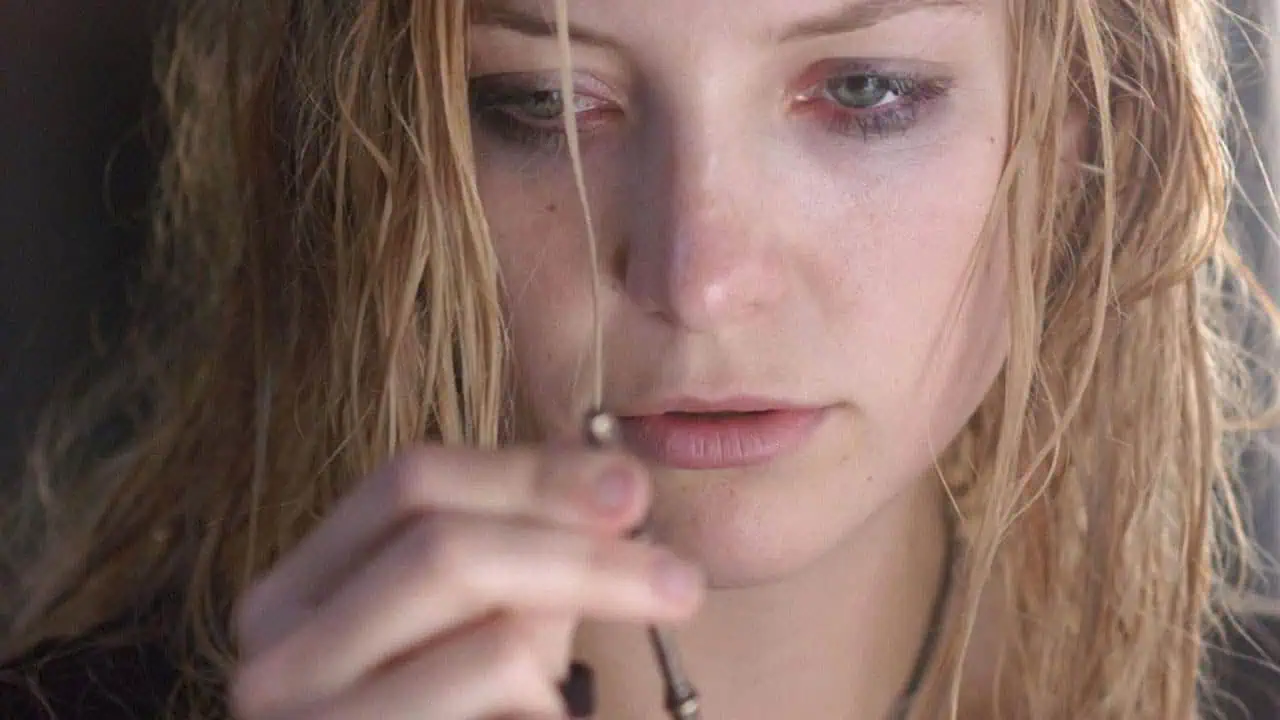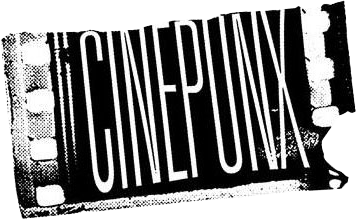
The early-2000s were a treasure trove of theatrical horror releases, not simply in terms of sheer volume, but also in terms of the wide swath of stories being told. Films were being released in theatres that, today, would automatically go straight to VOD or streaming. Take something like The Cave, the 2005 film starring Cole Hauser about a group of cave explorers who find themselves up against an unstoppable force of evil. Sure, it was a blatant rip-off of The Descent, but it had its moments. The film made just over $33M worldwide, an unsuccessful return considering the film somehow cost $30M to make. Think about that – a $30M horror film with no bankable stars set entirely in a cave. I cannot wrap my head around how that happened in 2005, let alone the possibility it would happen now, which it would not. The thesis here is that the early-2000s were a moment in time for horror films, so I generally revel in the excitement of finding films that feel like they were plucked directly out of that time period. Such is the case with two recent horror releases that got me thinking – “Are we returning to the early-aughts?” – albeit on a much smaller scale? Maybe not, but I’d sure like to think so.

Another 2005 release was The Skeleton Key, a Southern Gothic horror film starring Kate Hudson all about voodoo, ghosts, and conjurings. It made $94M at the box office on a still staggering $34M budget. And, while Kate Hudson might have had more name value than Cole Hauser, she was hardly someone who would carry a film with that sort of price tag. However, that particular gambit paid off, financially. Eye for an Eye, the new film from director Colin Tilley, feels like a spiritual successor to The Skeleton Key, all about a young girl who moves to Florida to live with her estranged grandmother, whose eyes were taken long ago by a supernatural entity known as “The Sandman”. It’s a Southern Gothic creature feature that pays attention to the details that matter, despite a meager budget that likely wouldn’t have even covered craft services on The Skeleton Key. And, boy, is the early-aughts energy strong with this one. Had it been released in 2005, it likely would have grossed upwards of $20M. Instead, today, it has to settle for a VOD drop, a smattering of theatres with no marketing to support its release, and folks like me championing it. It’s far from a perfect film, but it’s aughts are in the right place.

We just don’t get good creature features anymore, particularly ones with such inventive and memorable designs. And I would argue “The Sandman” is one of the more haunting screen creations in horror in some time, a combination between some malnourished ghoul plucked straight out of the annals of Hell, and present day Willie Nelson. In fact, Eye for an Eye is probably most similar, across the board, to what I consider to be the gold standard of creature features, Pumpkinhead, another picture about a demonic monster that preys on those who bully or hurt others. “The Sandman”, like “Pumpkinhead”, is a tool for revenge, a tool that cannot be dulled once it’s put to work. And it’s that twisted play on morality that lends even more connective tissue to those aughts. Think of something like The Descent, a film all about guilt, regret, and the equitable distribution of karma. Or how about Darkness Falls, a film about childhood fables come to life. Eye for an Eye takes the collective consciousness of that distinct period in time, pays homage to it, and finds a way to make it its own.

Alas, as is the case with most every film I’ve name-dropped thus far (save for The Descent), it would be an early-aughts film without its share of flaws and missteps. While some truly memorable and wild films came out during those years, horror was still finding itself. Post The Blair Witch Project, and during the waning years of the found footage movement, the horror world was still figuring out what the next ten-years would look like. Experimentation was running amuck, and experimentation generally breeds mistakes. Eye for an Eye is no exception. While the film gets right the things horror fans want them to get right – the creature designs, the jump scares, the location and atmosphere; it suffers a bit in the story department. Not the story surrounding “The Sandman”, but the story surrounding our protagonist, Anna (Whitney Peak). We learn very little about her apart from the tragedy she has suffered, and even that is passed over and given very little traction. S. Epatha Merkerson is phenomenal as “May”, the blind grandmother, and steals every scene she’s in, consistently. However, her character is really used as nothing more than a forced secondary antagonist, which doesn’t really make sense in the grand scheme of the story. I would also argue that the film doesn’t make enough use of its landscape. It’s a Southern Gothic film that needs to embrace the ‘Gothic’ a bit more.

What Eye for an Eye also has going for it is a terrific opening scene, a flashback involving a choreographed cheerleading routine. It’s bright and colorful, shot beautifully, and it kicks off the film with a confidence and a swagger I did not expect. The same cannot be said for The Sound, the second film in my aughts-laden diatribe, and a prime example of how just as the aughts giveth, they also taketh away in equal measure. Here’s a film that opens with a sequence so poorly conceived and lacking in both tension and scares that it feels as if they shot it in the director’s backyard, Friday the 13th Part V: A New Beginning style. Like The Descent, The Cave, and countless other films of the time, The Sound is about climbing. In this case, rock climbing. And, whereas the evil in Eye for an Eye is quite defined, the evil here is as nebulous as it gets. It’s legitimately referred to as ‘something evil’ multiple times. All we know about this evil is that it turns eyes black and causes people to be able to crawl like spiders. So, it’s an evil that basically makes rock climbers into super rock climbers. Is that a bad thing?

There’s a lot of plot here, so bear with me – there are some rock climbers trying to climb a mountain. One of them has something to prove because of his dad or some crap. Weird things start happening because of – you know – the evil, and people die. You don’t really need much more than that to follow along. There isn’t a single developed character, a single effective scare that doesn’t also make you giggle, nor is there any reason in the world for the ineptitude in the direction. We cut back and forth from these wide drone shots of climbers climbing, though we never see them actually climbing in those shots – they’re just stationary, hanging on; to close-ups of climbers climbing on what is clearly a soundstage with LED walls behind them; to ridiculously long sequences of characters socializing in their hanging tents with loud and abrasive techno/thrash music deafening us from time to time. The shame is that some of the dialogue isn’t terrible. There’s one effective monologue from a character named “Lucky” that feels like it’s plucked from a much better film. And then there is the whole base camp that is essentially just used to add extra minutes to the run time. I cannot, for the life of me, understand why we keep cutting back to them. I don’t think The Sound knows either.

Ineptitude aside, The Sound is dropping with the aughts energy, that ‘go for broke’ mentality that might have actually worked if they’d had a bigger budget. Then again, when the direction is this bad, it’s also highly likely they’d have just traded the budget for magic beans. But, what The Sound does have going for it is another connection – the early-2010s. While it might fit soundly (pun intended) into the early-aughts, it also feels very of the 2014-ish era, when films like As Above So Below, The Pyramid, and The Ruins were making their mark, though The Ruins was the end of the aughts. These were films with much smaller budgets than they would have been given just ten-years earlier, but all dealing with characters up against supernatural forces in unknown locations, from the Paris catacombs, to Egypt and South America. Had The Sound been released in 2004, it would have been theatrical. In 2014? Likely direct-to-video. Now, it’s somewhere in between. Oh, and the weirdest thing? One of the leads in this film is Alex Honnold, the subject of the Oscar winning, Free Solo. That’s right – maybe the greatest free climber in the world decided – “Let’s do a really crappy horror film!” And, to be sure, his acting is at nowhere near the same level of skill as his climbing.

From Southern Gothic fables to adventures in nature, the early-aughts had something for everyone. You can accuse that time for being a lot of things, but experimental and risk-taking is not one of them, even though those risks seldom worked out the way intended. It was a simpler time, before streaming and the rise of social media, when Hollywood bet big on horror properties. All we hear about today is how horror is the most bankable genre (because it is). People always act so surprised when a horror film performs well when, time and time again, we’ve been shown audiences want to be scared, on both a large and small scale. So a film like Sinners can break records and pack in audiences, and a film like Eye for an Eye can barely make a splash and garner a slow and steady cult following over the years, which I believe it will. And a film like The Sound can just…I dunno…go away. It’s actually pretty terrible. But, if you think horror doesn’t walk around in circles, let these two films be a prime example of how they do. It’s all cyclical. I expect, in the next few years, we’ll see a resurgence of the late-aughts, which saw a resurgence of found footage, high concept horror, and the return of the horror franchise (we are already starting to see this with Terrifier, Hell House LLC, and others). For me, Eye for an Eye and The Sound (even with as bad as it is) were a nostalgic nod to a time when the horror landscape was broad and the cream rose to the top. Eye for an Eye is floating like a log in a Florida swamp. The Sound sank like a stone and is now, thankfully, silent.




